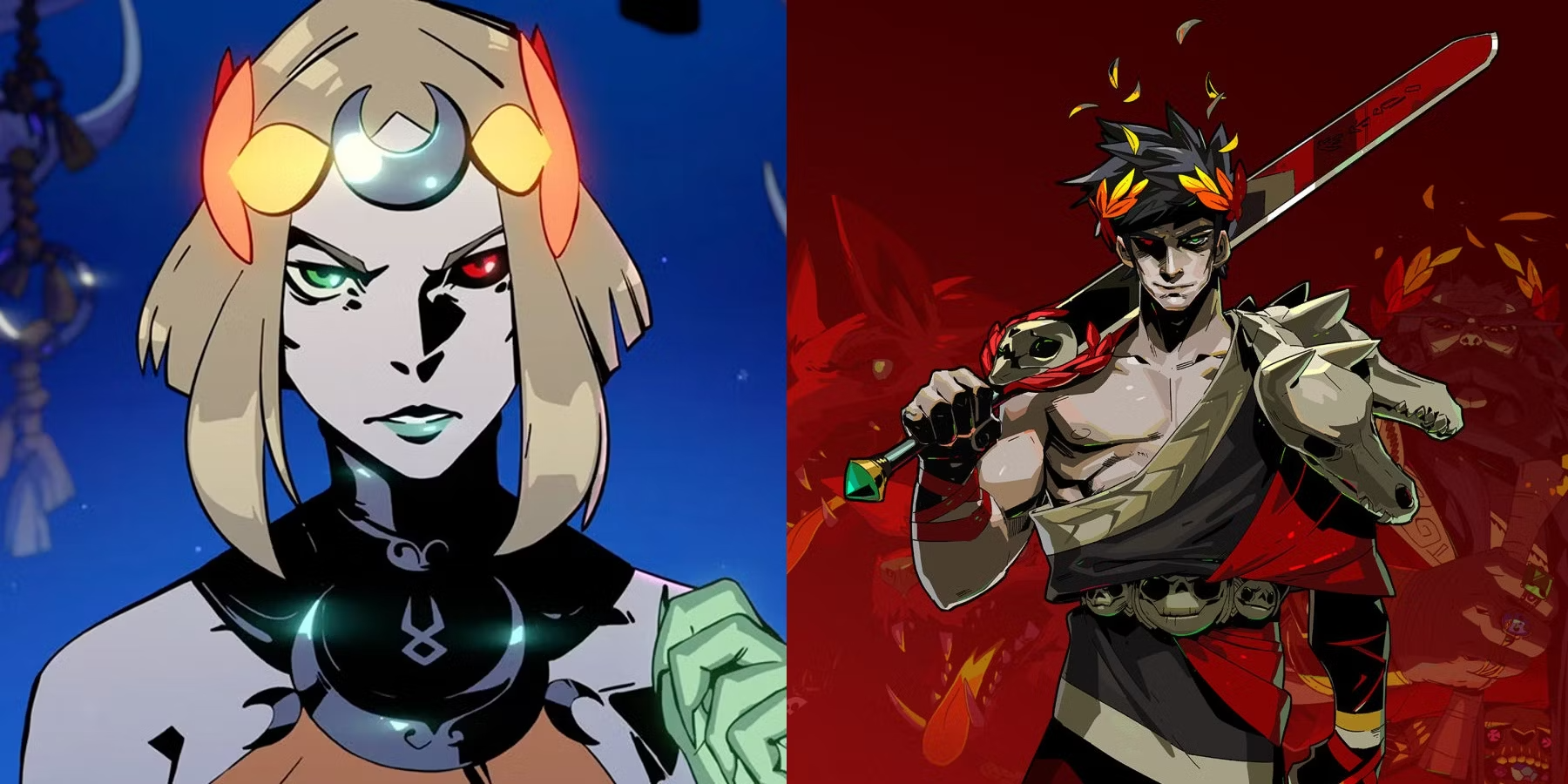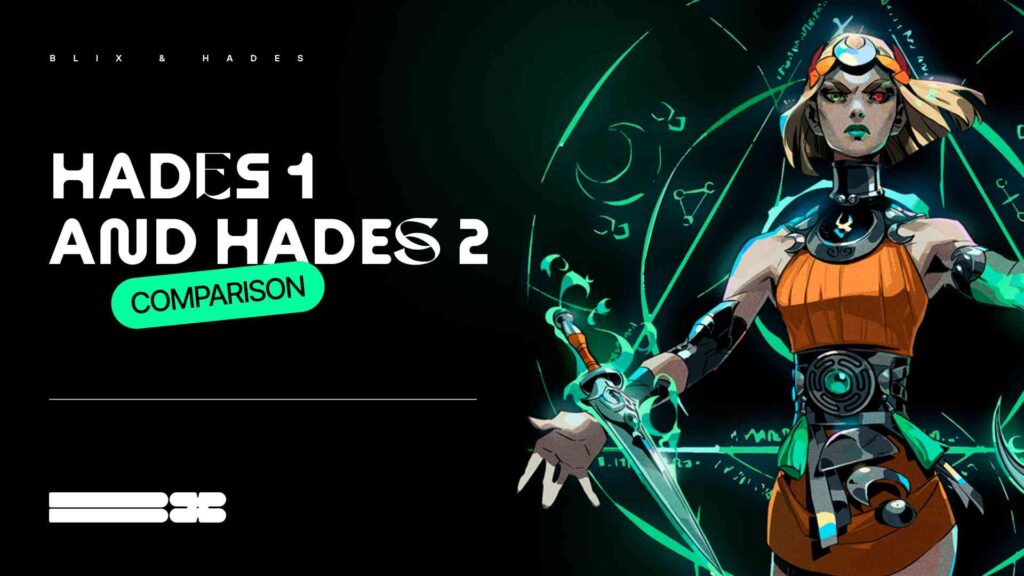Hades 1 was a popular game, and now we’re examining Hades 2 to see how it builds upon its predecessor. The Blix team has already mentioned Hades 2 in the top 2024 games list. This article, crafted by the Blix team and informed by community opinions from popular sites, delves into various aspects such as storyline continuity, gameplay mechanics, character design, and more.
It provides a comprehensive analysis for fans and newcomers, highlighting the enhancements and differences between the games. This guide is essential for understanding what makes Hades 2 unique and how it improves upon the original.
Contents
- 1 Highlights
- 2 Storyline and Continuity
- 3 Gameplay Mechanics
- 4 Character Art and Design
- 5 Progression and Upgrades
- 6 Early Access and Development
- 7 Difficulty and Replayability
- 8 Narrative and Dialogue
- 9 Audio and Music
- 10 Community and Modding Support
- 11 Platform Availability and Performance
- 12 Cultural and Mythological Representation
- 13 Community Feedback and Developer Response
- 14 Summary
Highlights
- Review of Hades 2 early access
- Analysis of the community’s reactions
- Comparison of the changes implied since the first part
Hades 2 Is Full of Surprises
Storyline and Continuity

Melinoë and Hades
Hades 2 continues the story from Hades 1, focusing on Melinoë, the sister of Zagreus, who seeks to overthrow Chronos, the Titan of Time. The story is a direct sequel, but it’s designed to be enjoyable without playing the first game. New mythological characters include Chronos and Moros, and deeper dives into existing lore’.
Gameplay Mechanics
Core mechanics are similar, with dungeon crawling and rogue-like elements. Hades 2 introduces new weapons like the Witch’s Staff and Sister Blades and a resource management system for crafting and upgrading items. The combat system now includes elemental boons and a magic gauge’.
Character Art and Design
Character art in Hades 2 has evolved with more detailed and dynamic designs. The visual style retains the vibrant, hand-painted look but includes more varied animations and expressive character interactions’.
TBSkyen reacts to Hades 2 character designs (old vs new)
Progression and Upgrades
Hades 2 features a revamped progression system. Arcana Cards replace the Mirror of Night and offer new perks and upgrades. Resource management plays a more prominent role, and new materials and crafting options enhance the upgrade mechanics’. All updates and development progress are shown on the Supergiant Games Twitter.
Early Access and Development
Hades 2 is in early access for a similar duration to Hades 1, with frequent updates based on player feedback. Supergiant Games plans to refine mechanics and story elements based on community input during this period’.
Difficulty and Replayability
The difficulty of Hades 2 is comparable to its predecessor, with new challenges and settings for varied play styles. New weapons, upgrades, and dynamic story elements ‘enhance replayability. However, people argue about harder boss fights.
Narrative and Dialogue
The narrative depth in Hades 2 is more significant, with more complex character interactions and branching dialogue. Story delivery is improved with richer backstories and more engaging quests’. In addition, dialogues in Hades 2 contain lots of links to the first chapter and vice versa.
Audio and Music
Hades 2 features a new soundtrack with contributions from returning and new composers, offering fresh musical themes. Voice acting is expanded, providing more character voices and interactions’.
Hades II – Main Menu Theme (Death to Chronos)
Community and Modding Support
Community feedback from Hades 1 has significantly influenced Hades 2, leading to enhancements in gameplay and story. Supergiant Games engages with the community for ongoing development, though official modding support remains unconfirmed’.
Platform Availability and Performance
Hades 2 is expected to be available on multiple platforms, including PCs and Consoles, and it will have slightly higher performance optimizations and system requirements than Hades 1’. Current (changeable) requirements are:
Minimum System Requirements:
Operating System: Windows 10 64-bit
Processor: Dual Core 2.4 GHz
Memory: 8 GB RAM
Graphics: GeForce GTX 950, Radeon R7 360, or Intel HD Graphics 630
Storage: 10 GB available space
Recommended System Requirements:
Operating System: Windows 10 64-bit
Processor: Quad Core 2.4 GHz
Memory: 16 GB RAM
Graphics: GeForce RTX 2060, Radeon RX 5600 XT, or Intel Arc A580
Storage: 10 GB available space
Highest Settings Requirements:
Operating System: Windows 10 64-bit
Processor: Quad Core 3.5 GHz
Memory: 32 GB RAM
Graphics: Gigabyte GTX 1060 6GB, Nvidia GeForce RTX 3070 8GB
Storage: 10 GB available space
Cultural and Mythological Representation
Hades 2 deepens the representation of Greek mythology, introducing new characters and exploring additional mythological themes. The game maintains a high cultural and mythological accuracy’’. As seen in this discussion, mythology, as a vital part of the story, is constantly developing and aligns with players’ wishes.
Community Feedback and Developer Response
Player feedback from Hades 1 has been integral in shaping Hades 2. Significant changes include improved progression systems and expanded narrative content, with developers actively engaging with the community throughout development’. Developers are actively present on social media and can be constantly reached by Discord.
Summary
Famous sequels in gaming often show a range of changes from their predecessors. For example, *The Legend of Zelda: Ocarina of Time* followed by *Majora’s Mask* showcased significant differences with a darker tone and time-based mechanics. Conversely, *Half-Life* and its sequel, *Half-Life 2*, maintained similar core gameplay but enhanced graphics and storytelling. Another example is *Assassin’s Creed* which kept its parkour and stealth elements consistent in sequels while introducing new historical settings and characters.
These examples illustrate how sequels can diversify significantly or retain core elements while improving upon them.


